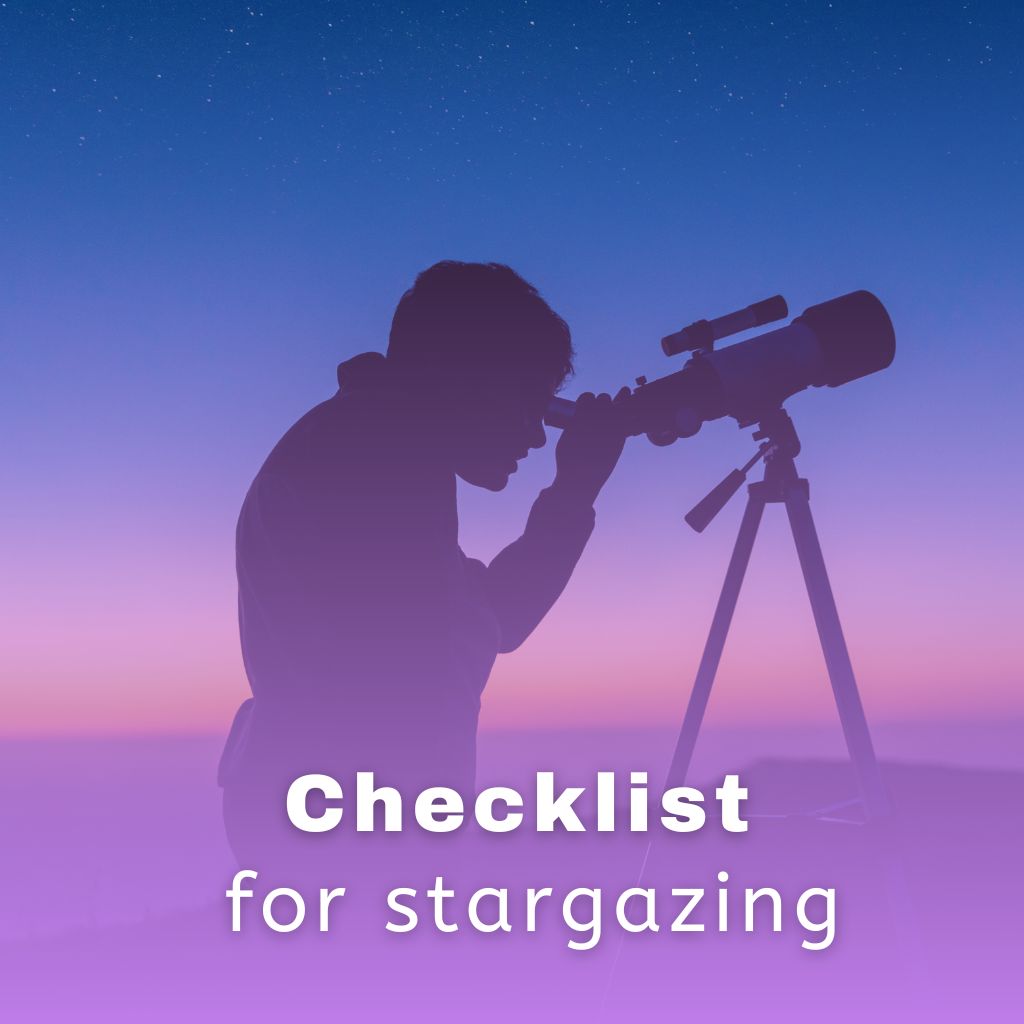This site contains affiliate links to products. I may receive a commission for purchases made through these links.
Ever looked up at the night sky and felt a sense of wonder? I know I have. Stargazing is an age-old pastime that’s as fascinating as it is complex. But don’t let that deter you. I’m here to help you navigate the cosmic ocean, one star at a time.
In this guide, we’ll start with the basics. You’ll learn how to identify some of the most recognizable constellations, the best times and places for stargazing, and the essential equipment you’ll need. Whether you’re an aspiring astronomer or just a casual observer, this guide is your ticket to the stars.
So, are you ready to embark on this stellar journey? Let’s dive in and explore the mysteries of the night sky together. It’s time to turn your gaze upwards and let the stars guide your way.
The Wonder of Stargazing
Engulfed in the serene blanket of darkness, stargazing presents an exhilarating journey into the cosmos. Peering into the night sky is more than just about pinpointing celestial bodies; it’s plunging yourself into an immersive size and time-scale experience that transcends human comprehension.
Stars, planets, meteors, even galaxies, are projected against the vast backdrop of space, each with its story and unique properties. I’ll share with you some transformative insights that will enhance your appreciation of this cosmic theater.
There’s a certain feeling of awe that’s ignited when you see Saturn’s rings or track the tirelessly wandering ‘red planet’—Mars. Observing the moon’s craters closely reminds you of cosmic events that have shaped and continue to shape the universe. It might also occur to you that just like these celestial bodies, we’re all part of this unfathomably large cosmos.
Indulging in the wonders of stargazing also offers a refreshing perspective on life. Time starts to feel relative; you realize that the light from distant stars reaching your eyes today started its journey millennia ago. It almost feels like peering into the past—the wonders of the universe neatly recorded in particles of light.
Excitingly, every stargazing session offers a unique view of the sky. Factors like the time of year, clarity of the atmosphere, and the location’s altitude significantly influence what celestial sights are on display. The dynamic nature of the cosmos ensures you never get the exact same view twice; each glance upward can bring about a new discovery.
With the right knowledge and equipment—which we’ll delve into later—stargazing can fast become a riveting pastime, or even a lifelong passion. Indeed, the rewards of stargazing are far-reaching, granting not just knowledge, but also serenity and a sense of belonging in this grand cosmic spectacle.
Essential Equipment for Stargazing
When it comes to stargazing, having the right set of tools can make all the difference.
Binoculars should be your first investment. They’re compact, relatively inexpensive, and are ideal for a beginner’s astronomy kit. They help you to see the moon’s craters, Jupiter’s moons, or even a smattering of far-off stars and nebulae that are typically invisible to the naked eye.
Another must-have piece of equipment is a telescope. Even a basic model can magnify the heavenly bodies far surpassing the capabilities of binoculars. With a robust telescope, detail-rich views of the moon, planets, star clusters, galaxies, and nebulae become quite feasible. But remember, don’t buy a telescope only because it boasts the highest magnification. Aperture, the lens or mirror’s diameter, is the most critical factor in how much you’ll see. Bigger aperture scopes collect more light, allowing you to view fainter objects.
Virtual sky maps or stargazing apps present an excellent way to learn about the night sky. They cater to different experience levels: beginners, intermediate, and pro stargazers alike. My favorite app is “Stellarium”, which offers a realistic display of the night sky from any location. You can also fast-forward or rewind to see how the sky’s appearance changes over time.
Besides, do not ignore comfort items such as a reclining lawn chair or a blanket. Looking up for an extended period can be a pain in the neck, literally. A bit of comfort can make the experience more enjoyable, helping you to stargaze longer.
Furthermore, have a printed sky map, a notebook for logging observations, a red flashlight to preserve night vision, and a thermos of hot coffee or chocolate for those chilly nights.
Read also: How much should I spend on a beginner telescope?
Best Times and Places for Stargazing
When it comes to stargazing, timing and location are everything. But don’t worry, I’m here to help you understand when and where to look up.
Let’s start with the ‘when’. New Moon nights make for the best stargazing. The darker the skies, the more stars you’ll be able to see. This period, which lasts for about a week, provides the darkest skies as the bright moonlight doesn’t outshine other celestial bodies.
Let’s talk about the ‘where’. Not all locations are created equal for stargazing. Dark Sky Reserves are places where you’ll find the least amount of light pollution. Light pollution refers to artificial light that makes it difficult to observe celestial bodies. The International Dark Sky Association recognizes these reserves, and you’ll find them around the world. Here’s a short table showcasing a few notable ones:
| Reserve | Location |
|---|---|
| Mont Mégantic | Canada |
| Exmoor National Park | United Kingdom |
| NamibRand Nature Reserve | Namibia |
| Aoraki Mackenzie | New Zealand |
| Westhavelland | Germany |
Aside from these reserves, national parks or remote camping spots are great stargazing locations. They are usually far from city lights, providing you cleaner and clearer skies.
Recognizable Constellations for Beginners
So you’ve found your perfect spot, and you’re gazing up at the night sky, but what should you look for? Let’s start with some constellations that you’ll be able to spot easily, even if you’re a beginner.
The Big Dipper and the Little Dipper are two of the most well-known constellations, especially in the northern hemisphere. The Big Dipper is part of the larger constellation known as Ursa Major, or the Great Bear, while the Little Dipper forms part of Ursa Minor, the Lesser Bear. Look for a distinctive, ladle-shaped pattern of stars forming each Dipper.
Orion, often referred to as The Hunter, is another easily identifiable constellation, particularly in winter months. The three stars in a row that make up Orion’s belt are a giveaway.
Another constellation to look out for is Cassiopeia. This one is easily recognizable by its distinctive ‘W’ shape.
Remember, stargazing isn’t always just about finding and identifying constellations. It’s also about observing celestial bodies, like planets, stars, and meteor showers. Once you’ve spotted a few constellations, try using them as a guide to locate other celestial bodies. For instance, the belt of Orion points towards the brightest star in the sky, Sirius, and following the arc of the Big Dipper’s handle can lead you to Arcturus, a bright orange star.
Quick reminder: Stargazing takes patience and practice. Don’t feel discouraged if you can’t immediately identify these celestial features. The longer you observe the sky and play connect-the-dots with the stars, the easier it’ll get to recognize these patterns. Before you know it, you’ll be navigating the night sky like a pro.
You may also like: How to Recognize Planets in the Night Sky
Conclusion: Embarking on a Stellar Journey
So, you’re all set to embark on your stargazing journey. Remember, it’s not just about the equipment. It’s also about the experience. With your binoculars or telescope, you’ll get a closer look at the cosmos. Virtual sky maps and stargazing apps will guide you through the celestial bodies. Comfort items will make your stargazing sessions more enjoyable. A printed sky map, notebook, red flashlight, and a thermos of hot beverage are just as important. They’ll enhance your overall experience.
Dive into the world of stargazing and let the stars guide you. It’s a journey you won’t forget.
Frequently Asked Questions
What is the essential equipment for beginner stargazers?
The recommended equipment for beginner stargazers includes binoculars, a telescope, and a virtual sky map or stargazing app. Additionally, comfort items such as a reclining lawn chair, a blanket, a printed sky map, a notebook for logging observations, a red flashlight, and a thermos of hot beverage are also suggested.
What are the benefits of having binoculars and a telescope for stargazing?
Both binoculars and telescopes allow you to see celestial objects more clearly. A telescope will enable you to observe farther and in more detail, while binoculars offer a wider field of view, making them ideal for spotting constellations and meteor showers.
Why is a virtual sky map or stargazing app recommended for beginners?
A virtual sky map or stargazing app can help beginners learn about the night sky. These tools provide you with real-time guidance on what you’re seeing, making them a useful reference tool for identifying stars, planets, and other celestial bodies.
Why should one consider having comfort items for stargazing?
Comfort items like a reclining lawn chair or a blanket make the stargazing experience more enjoyable. They allow you to relax and observe the sky for extended periods without discomfort.







